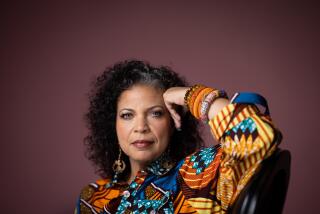When Protector and the Protected Clash
- Share via
I’m trying my best not to think of Southern California’s latest police crisis in terms of race, but I keep coming back to one disturbing question: If Tyisha Miller had been white, would she be dead?
I know there are a lot of variables that mitigate--though don’t excuse--the fact that four Riverside policemen got nervous and that their taut nerves seem to have cost Miller her short life. Yes, she had a gun in her lap, but she was asleep, possibly even in medical distress. Yes, the doors to her car were locked, the windows rolled up, but she had a flat tire and had been waiting for a cousin to return with help, and she was a young woman alone in the middle of the night. Had I been in the same situation, I would have made sure my windows were closed and doors locked tight, too. And she’d been drinking earlier, which may have contributed to her semi-conscious condition. But since when is drinking an offense punishable by death in this country?
Much of the reason Miller died can be traced to police jumpiness, and police are jumpy with good reason: Each year more of them are added to the bronze tablets in station houses that honor those fallen in the line of duty. The horror stories circulate in locker rooms and in the bars where cops hang out, and on Internet chat rooms where they exchange war stories and the mordant humor that enables them to get up and go to work each day.
Unlike the 1950s, in many places cops are no longer authority figures who are obeyed. They’re eyed with suspicion, sometimes hostility, in many neighborhoods, and often seen as a de facto army of occupation. It’s tough being a cop.
It’s also tough being somebody a cop is afraid of--especially if the reason he’s afraid of you is the color of your skin, or because you live in a neighborhood he’s afraid to be in. Black and brown citizens in many urban areas are walking around feeling as if we have bull’s-eyes painted on our backs, that the neighborhood is a shooting gallery and we’re the ducks. Every Amadou Diallo, every Tyisha Miller tragedy just serves to reinforce the nagging suspicion that this is the unfortunate tax we pay for being black in a country where black often is viewed as alien, suspect and sinister by the people charged with protecting and serving every citizen.
That’s not always the case, of course. I’ve met white police officers who patrolled in South-Central and East L.A. for years, and liked their beats. Grandmothers would bring them homemade cookies when they were on duty. Little kids would trail them, peppering them with questions. Block clubs would request them by name and give the watch commander hell if he dared to send someone else. These officers had the time, patience and willingness to base conclusions on their experiences, and both sides of the equation benefited. They saw each other as human first, other things after.
But far too many police officers live lives that are purposefully homogeneous, 180 degrees different from their work environments by design. Consequently, most of what they know about the people they’re charged with protecting and serving comes from watching television (no stereotypes there, right?) and listening only to the horror stories. Like the cops who killed Tyisha Miller, they’re often young, inexperienced and terrified that there’s a bullet with their name on it.
Which brings us back to Tyisha Miller, and my original question: What if she’d been the same height and weight, the same age, in the same kind of car at the same time of day, same physical condition with a gun in her lap, but she’d had straight, sandy hair, green eyes and a turned-up nose with freckles? Would those four policemen have reacted in exactly the same way?
More to Read
Sign up for Essential California
The most important California stories and recommendations in your inbox every morning.
You may occasionally receive promotional content from the Los Angeles Times.













